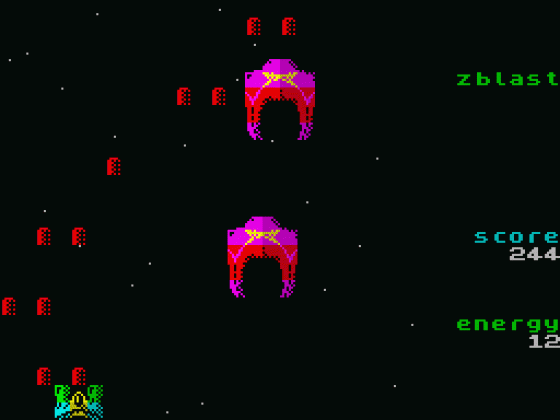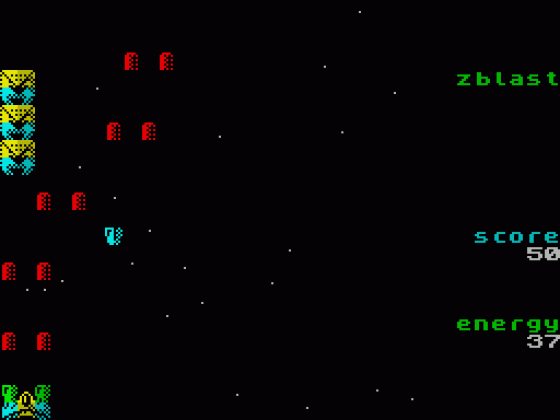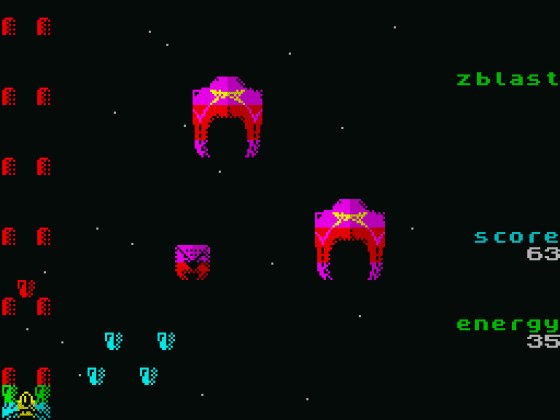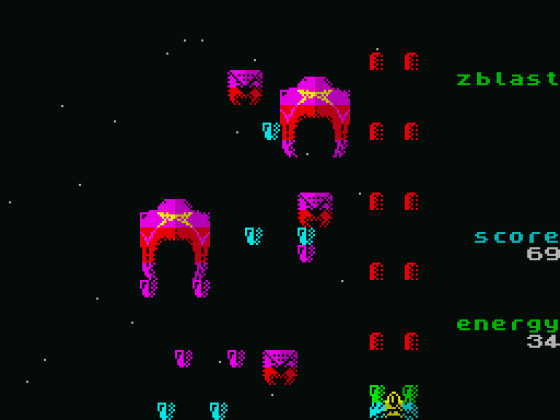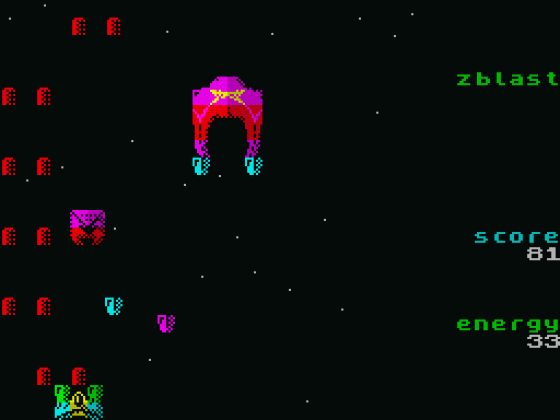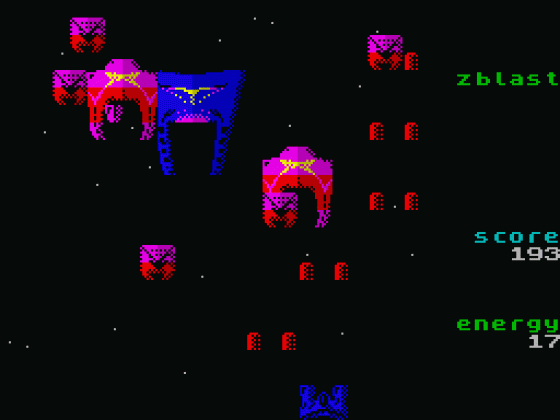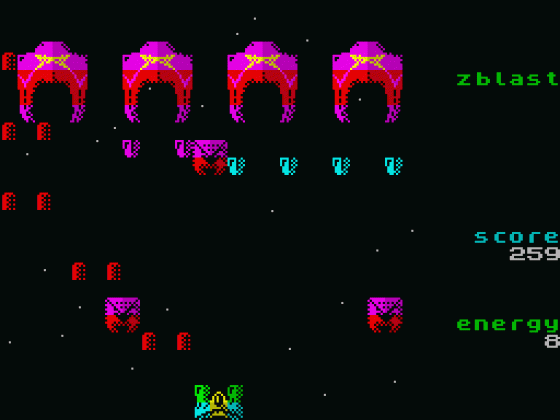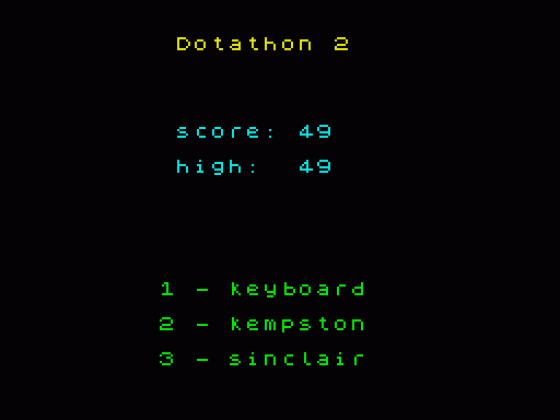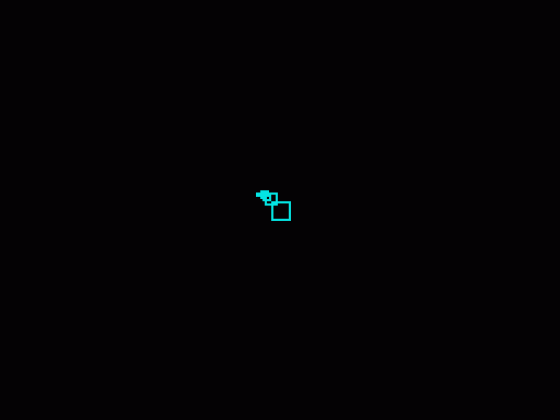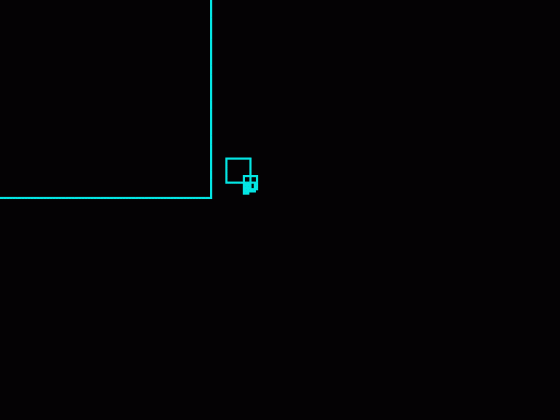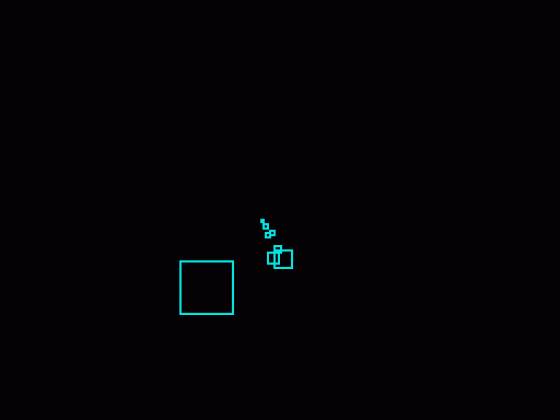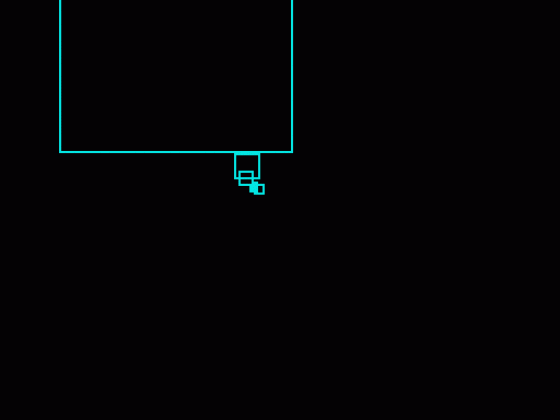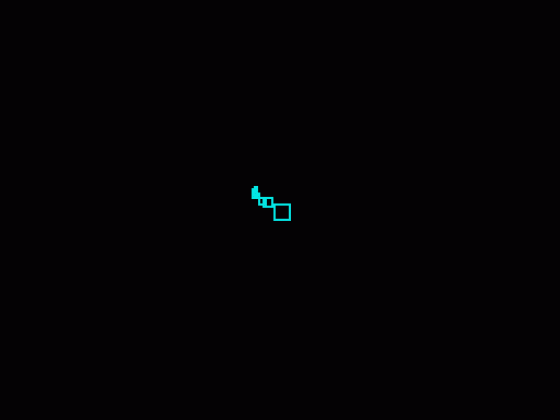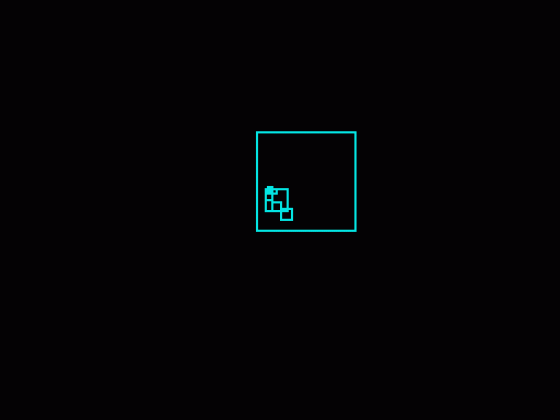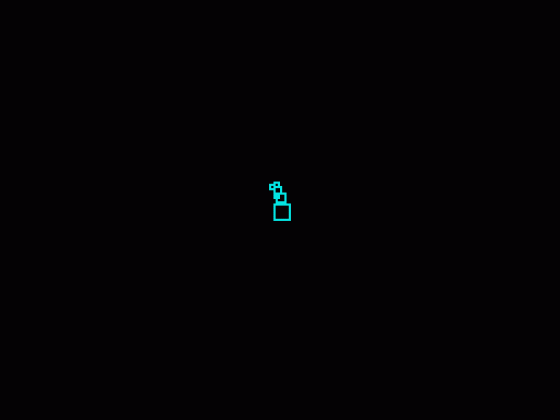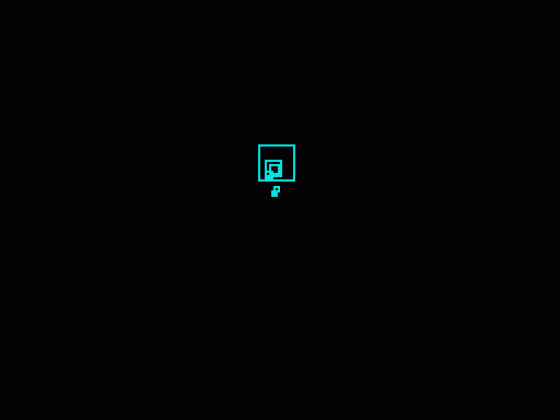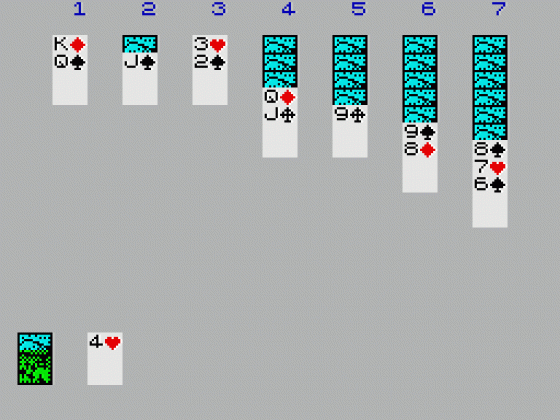

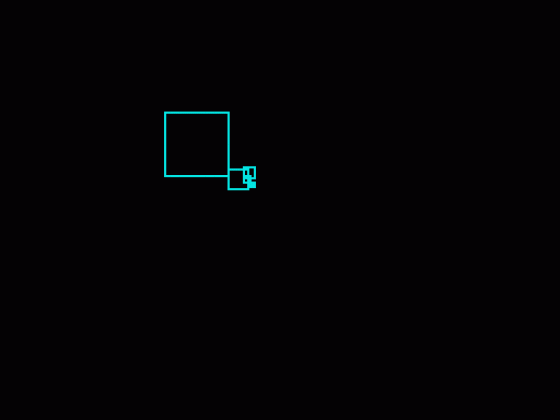

| Genre: | Compilation Of Arcade Games |
| Publisher: | Russell Marks |
| Contents: | |
| Machine Compatibility: | Spectrum 128K |
| Release: | Released as Public Domain software on Cassette |
| Compatible Emulators: | ZXSpin (PC (Windows)) Nutria (PC (MS-DOS)) |
| Original Release Date: | 1st January 2003 |
| Box Type: | Not a physical item so no box |
| Author(s): | Russell Marks |
Variant Items
There are 0 other items featuring this same game (that we know about!). Click any of them for their details.
Active Auctions
Closed Auctions
Buy It
Unfortunately no-one is currently selling this item.
Auction Price Watch
Worried you're being ripped off? Closing prices on eBay can help you decide what a reasonable price is for a particular item.
Full Instructions
The Game
zblast SD+ is a compilation of four games - the main ones are zblast SD and Scrolly Stack, but there are also two simple "minigames", Dotathon 2 and Soliyawn. All four games are loaded together, and you can switch between them without reloading. The compilation requires a Spectrum 128/+2/+3.
To load, turn on or reset your machine and press Enter to select the "Tape Loader" or "Loader" option, and start the tape.
When loading has finished, you're presented with a menu where you choose which game to play. Press a key from 1 to 4 to choose the game.
Once you've started your chosen game, you can press Caps-shift and Space together (or the Break key) at any time to return to the menu.
Instructions for the four games are given below...
ZBLAST SD
Plot: none. Aim: shoot everything.
Getting hit loses you energy. But when your ship appears blue (after being hit), it cannot be harmed. If you get hit when your energy is at zero, it's game over.
If you don't get hit at all during a wave, you get 10 extra energy points. You'll probably want to stock up on these in the earlier waves.
There are 20 different waves. If you finish all 20, you start again, but with things going a lot faster.
Game Controls
Controls are keyboard, or Kempston/Sinclair joystick. The keys are QAOP for up/down/left/right, and Space to fire. You can pause the game with H.
Hints And Tips
You can hold down fire to get auto-fire, but you should be able to get a faster firing rate by hammering the key/button. Still, you're best off using auto-fire most of the time, and saving the hammering for when you really need a burst of speed.
The large purple and blue baddies generate smaller baddies, so try to kill off the big baddies first. If you don't, you'll soon be facing a wall of bullets...
Just because baddies are of the same type doesn't mean they take the same number of hits to destroy. But it's always the same for each specific baddie.
Only the middle third of your ship (between the blaster things) can actually be hit, so use this to your advantage.
Scrolly Stack
Scrolly Stack is an action puzzle game. Once you start, there's a stack of blocks gradually rising up the screen. Your job is simple, to stop them reaching the top. If they reach the top it's game over. Apart from that, the ultimate aim is to keep going until you score 50,000 points. Do this and you've beaten the game.
You don't control the blocks directly - what you do control is a 2x1 cursor. You can move this anywhere in the play area, and swap any two blocks that appear "inside" it. You can also swap a block and an empty space, to move the block into that space. Try it out and you'll soon get the idea.
So what good does moving the blocks around do? Well, if you make a line of three blocks (vertically or horizontally) which are the same colour, they go "bam" and disappear. Which is handy for keeping the stack down.
(In fact, you may notice when you start the game that often a bunch of blocks will clear spontaneously - that's because the blocks are randomly chosen, and sometimes there will already be lines in them. Count yourself lucky, you still get the points for it...)
Combos & Chains
If you get more than three blocks to disappear at once, this is called a "combo". You get more points for clearing the blocks this way.
If, when you clear some blocks, the blocks that fall make more lines, this is called a "chain". Again, you get more points for doing it this way (even more than for a combo). When you've got a chain going, a "x2", "x3", etc. will appear onscreen (where it normally says "x1"). Keep a chain going long enough and you'll get a little fanfare when you're done.
An alternative way of making chains is to move a block into the clearing space during the short delay AFTER all the blocks have cleared but BEFORE the blocks above fall (!), so that when they finally do fall it makes a line - these are called "skill chains". They can be tricky to get the hang of, and they score just the same as normal chains... but it's hard to make really long chains without them.
Controlling The Stack
If you find the stack is going too slowly for your tastes, and you want some more blocks to play with to make your epic chains, there's a manual raise-the-stack button you can use (more on that below).
The "natural" stack-rising gets gradually faster as your score gets higher, finally reaching maximum speed at about 20,000 points. Once you start getting to the higher speeds, you might want to know how you can stop the stack rising for a while. Here's how it works.
When you clear any blocks at all, the stack stops until they all disappear. It isn't much of a delay, but it's better than nothing.
If you get a combo, the stack stops for longer. A quick 4-block combo is a good thing to try getting in an emergency.
If you get a chain, the stack stops for even longer (the length depends on the number of chains you get).
If the stack is stopped and you're impatient to get on with things, just use the manual-stack-raise button - in addition to the normal stack-raising effect, it cancels any stack-stop delay you've built up.
Preview Row
The partially-visible row of blocks at the bottom of the stack doesn't count as part of the stack until it's fully visible. You should be able to see that the colours on the partially-visible blocks are a bit darker - that's why. Just think of it as a kind of preview of the blocks that are on the way.
Game Controls
Controls are keyboard (recommended), or Kempston/Sinclair joystick. The keys are QAOP for up/down/left/right, and Space to swap the blocks. Use Enter to raise the stack manually. You can pause the game with H.
Hints And Tips
Combos and chains are the key to high scores. It's worth practicing skill chains, in particular. If you need more blocks to get these, use the stack-raise key.
The game is quite easy at the start, so you should be able to get long chains early on. As things get faster, long chains may become too difficult, so start to concentrate on shorter chains, or combos. Only go for simple three-block matches when you have to.
If you get good enough to get 50,000 points regularly, try doing it in the shortest time you can (as shown onscreen). The author's best time is about 20 minutes.
Dotathon 2
Dotathon 2 is a simple tunnel-following game. The aim of the game is to keep inside the tunnel of... squares. (Well, they were dots in the prequel.) More precisely, you have to make sure the centre of the screen is within the closest square when it hits you. You're given a small margin of error, but not much.
You get 3 lives - these aren't indicated onscreen, but the edge of the screen turns red when you lose one. Lose them all and it's game over, and at this point you get to see your score. (Your score is increased once for each square successfully passed through, with the score increase going up each time until you lose a life.)
The game starts fairly slowly, but it does speed up over time.
Game Controls
Controls are keyboard, or Kempston/Sinclair joystick. The keys are QAOP for up/down/left/right. As the author is feeling rather evil, there is deliberately no pause in this game.
Hints And Tips
Plan your movements ahead of time. In particular, try not to concentrate too much on the closest square, but on the squares one or two steps ahead. You should still be able to stay aware of the closest square's position while doing this.
Soliyawn
Soliyawn is a one-player card game, usually called Solitaire, Patience, or Klondike. It uses the (easier) 1-card draw variant.
The aim of the game is to get all the cards in each suit onto the matching ace pile, in ascending order (with aces low) from ace to king. To help you do this, you can move cards onto/between the seven main runs of cards which are dealt when you start. Any face-up cards on those must be in descending order (K, Q, J, 10, ... 2), and have alternating red/black suit. When moving cards between the main "piles", you can only move entire runs (every face-up card on the "pile"). When moving to a main "pile" which has no cards at all, you can only move a king there (or the top card of the run you're moving must be a king).
The main card piles are shown at the top of the screen (growing downwards), the deck at the bottom-left, and the ace piles at the bottom-right. (Initially you can't see the ace piles, as you have to move an ace to them before there'll be anything there.)
Game Controls
Control is keyboard-only. The keys are:
Enter - turn over a card from the top of the deck. If the deck is empty, it flips the turned-over cards back onto the deck first.
1 to 7, or D - pick a card (or run) to move from the numbered pile or the deck (actually the topmost turned-over card). Once you've pressed this first key, you then choose where to move it, with 1 to 7 and A meaning either the numbered pile, or the relevant ace pile. If you attempt a move which isn't allowed, you'll get beeped at.
Caps-shift+R - restart, abandoning the current game, and reshuffle/deal from scratch.
Game Credits
Written by Russell Marks. This compilation is hereby placed in the public domain.
Thanks to everyone behind the Minigame Compo for inspiring the games, which would never have been written otherwise, and to Cronosoft for publishing this compilation on such generous terms.
Published by Cronosoft.
Screen Designers
The following utilities are also available to allow you to edit the supplied screens of this game:
Cheats
Download
Report A Problem
We thank you from the bottom of our hearts if you report something wrong on our site. It's the only way we can fix any problems!
You are not currently logged in so your report will be anonymous.
Add Note
Release Country
Change the country to update it. Click outside of this pop-up to cancel.
Scan Of Selected Article
If you auction an item, it will no longer show in the regular shop section of the site.



